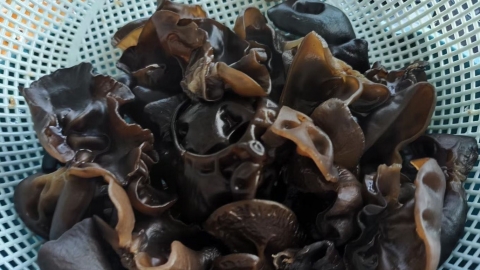Can black fungus and cucumber be eaten together?
Under normal circumstances, wood ear fungus can be eaten with cucumber, but excessive consumption is not recommended. Details are as follows:

Wood ear fungus is rich in dietary fiber, iron, calcium, and other nutrients, which help promote intestinal motility and improve blood circulation. Cucumber contains abundant vitamin C, vitamin E, carotenoids, and other nutrients, and has effects such as clearing heat, relieving summer heat, promoting diuresis, and detoxification. There is no conflict between their nutritional components, and combining them can enrich the nutritional structure of the diet. Therefore, they can be consumed together. Additionally, wood ear fungus contains abundant dietary fiber that helps promote intestinal motility, while cucumber has a high water content, which is also beneficial for digestive system health. Together, they can effectively aid in lubricating the intestines and relieving constipation.
Although wood ear fungus and cucumber can be consumed together, excessive consumption is not recommended because both contain dietary fiber, and overconsumption may cause bloating and indigestion. Special attention should also be given to certain populations, such as patients with kidney disease. Wood ear fungus contains a certain amount of potassium, and excessive consumption may increase the burden on the kidneys. For individuals allergic to either wood ear fungus or cucumber, allergic reactions such as skin redness and swelling may occur after consumption, in which case it is not advisable to consume them.
Some underripe cucumbers may have a bitter taste on the skin. It is recommended to peel the cucumber before consumption to effectively remove the bitterness and also help avoid potential health risks from pesticide residues.








